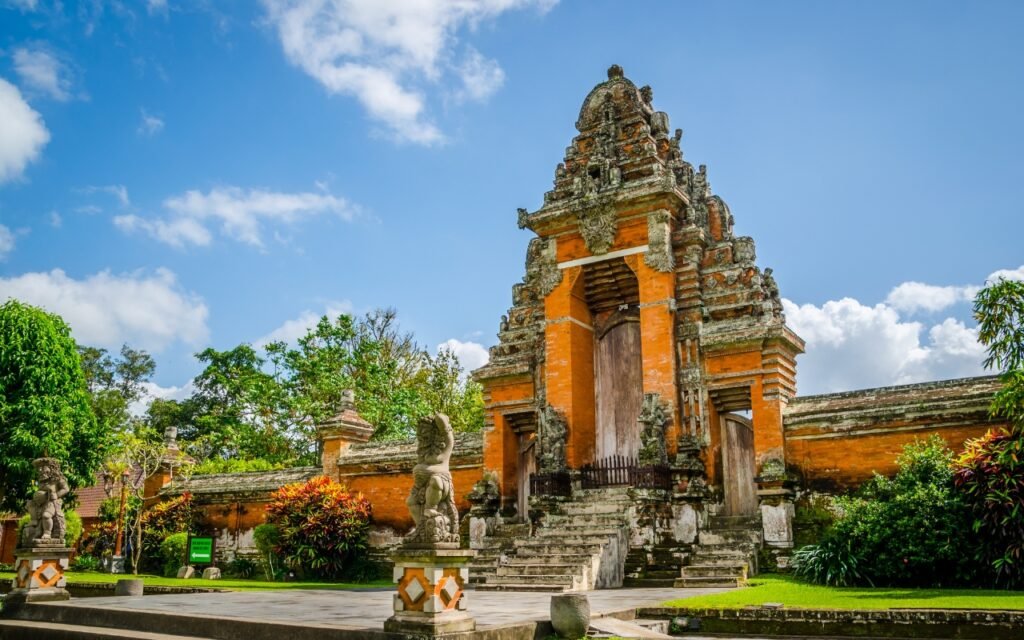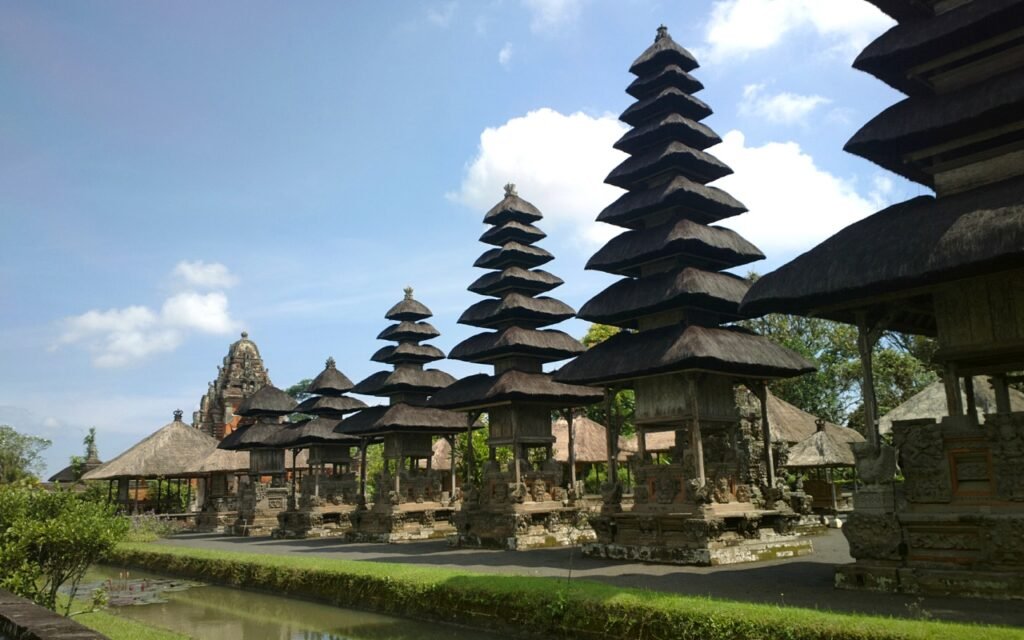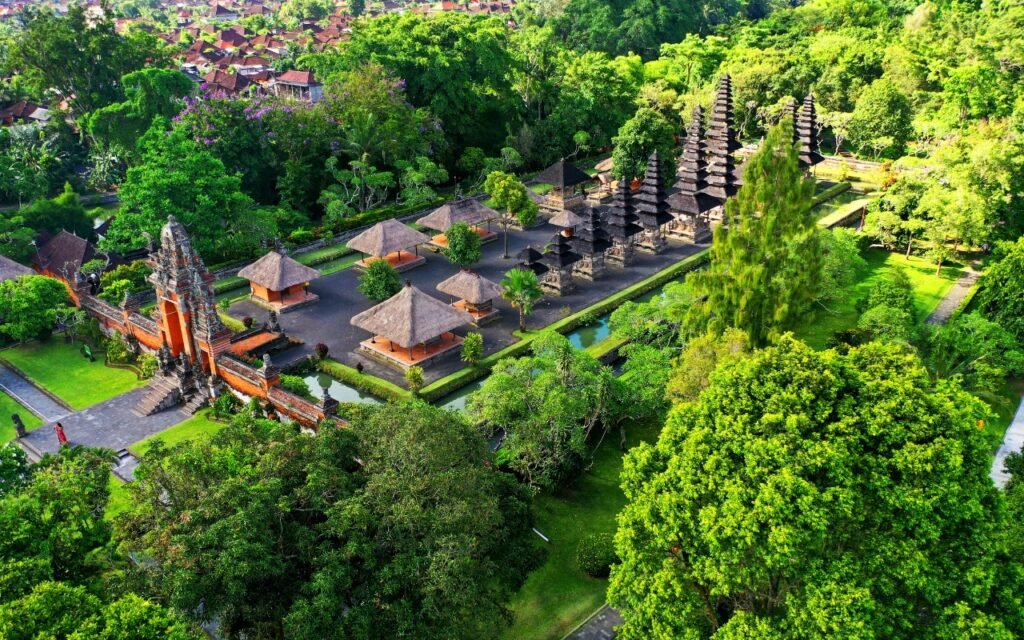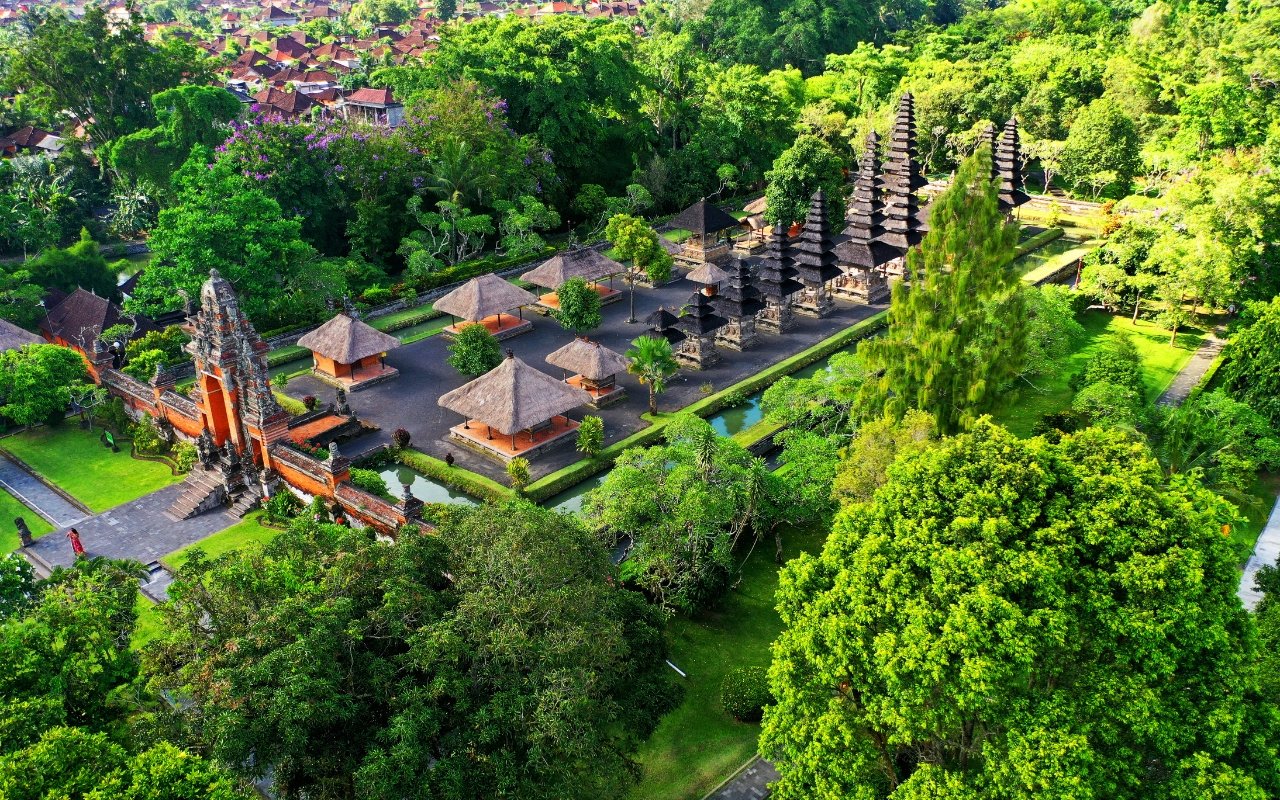Taman Ayun Temple
Taman Ayun Temple, officially known as Pura Taman Ayun Mengwi, is a beautiful and historically significant Hindu temple complex located in Mengwi, Badung Regency, Bali. Built in 1634 by the Raja of Mengwi, I Gusti Agung Putu, it served as the state temple of the Mengwi Kingdom until its fall in 1891. The name “Taman Ayun” translates to “beautiful garden,” which perfectly describes the temple’s serene setting amidst expansive courtyards, tranquil moats, and lush gardens.
The temple’s design is a remarkable example of Balinese temple architecture, adhering to the principles of the Tri Mandala (three zones) concept, representing different levels of sanctity. It also incorporates elements of the Sanga Mandala (nine directions) in its layout and the orientation of its shrines.
Key features of Taman Ayun Temple include:
- Moats and Walls: The temple is surrounded by a large moat, giving it an almost island-like appearance and symbolizing the cosmic ocean. High walls enclose the complex, creating a sense of sacred space and tranquility.
- Multiple Courtyards: The temple consists of several spacious courtyards, each serving different ceremonial purposes and containing various shrines and pavilions (bale). Entry to the inner courtyards is restricted to worshippers.
- Impressive Meru Towers: The most striking feature of Taman Ayun is its collection of towering meru, multi-tiered pagoda-like structures with thatched roofs. These meru represent different deities and ancestral spirits, with the tallest reaching up to eleven tiers. Their varying heights and elegant design create a visually stunning skyline within the temple complex.
- Bale Bengong: A traditional Balinese pavilion designed for relaxation and contemplation, often found in the outer courtyards.
- Aling-aling: A strategically placed screen wall at the main entrance, designed to disrupt a direct line of sight and prevent negative influences from entering the most sacred areas.
- Lush Gardens: The courtyards are adorned with well-maintained lawns, frangipani trees, and other tropical plants, enhancing the temple’s “beautiful garden” ambiance.
Taman Ayun Temple is not only a significant religious site but also a testament to the artistic and architectural prowess of the Mengwi Kingdom. Its well-preserved structures and serene environment led to its recognition as a UNESCO World Heritage Site in 2012, as part of the subak (traditional irrigation system) cultural landscape of Bali. Visiting Taman Ayun offers a peaceful and culturally enriching experience, providing insight into Bali’s rich history and spiritual heritage.










